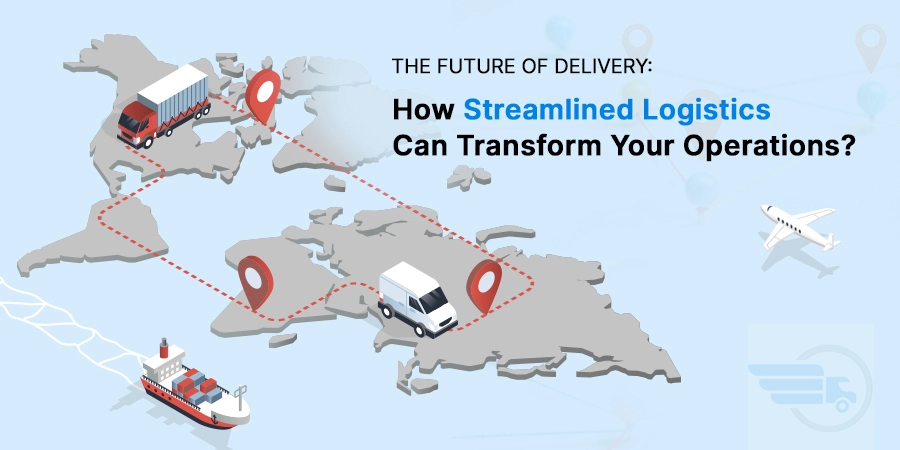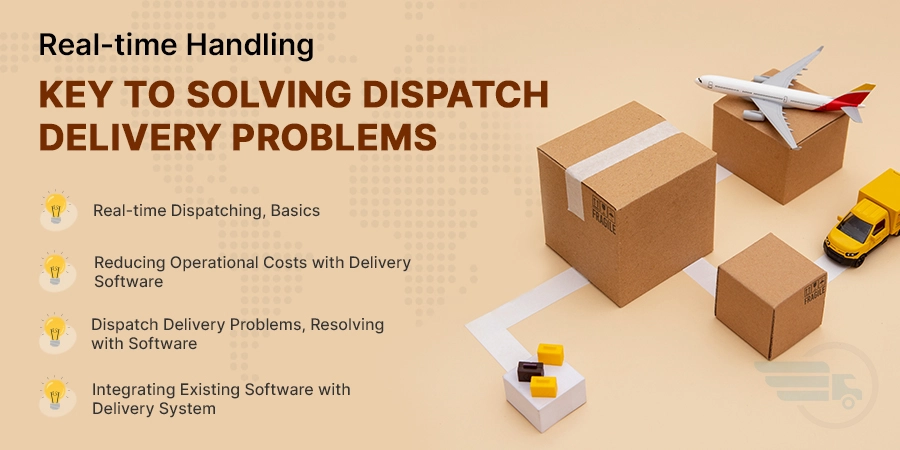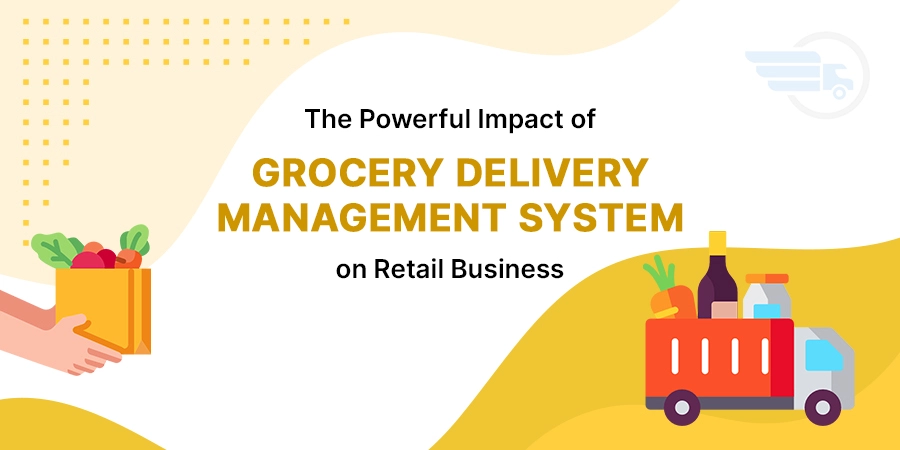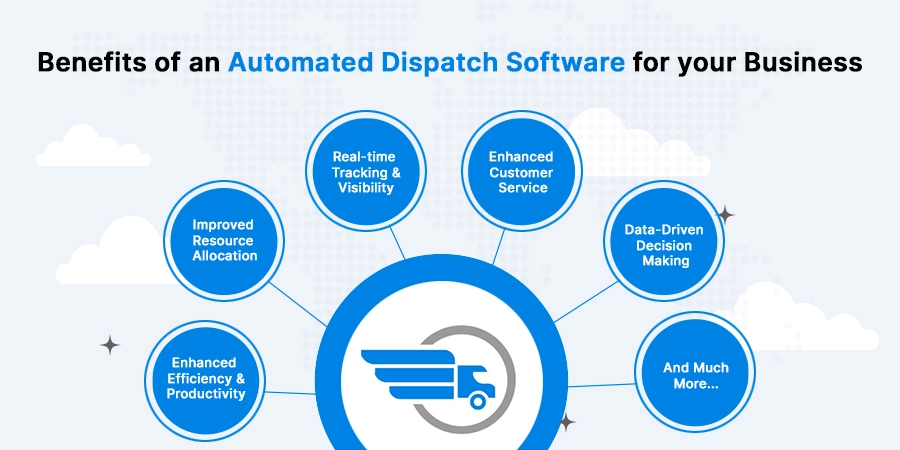The Future of Delivery: How Streamlined Logistics Can Transform Your Operations

Introduction
Setting the Stage: The Evolution of Delivery Services
The evolution of delivery services has transformed how businesses and consumers interact, reshaping industries and lifestyles. Originally, delivery services were rudimentary. The advent of motorized vehicles marked a significant leap, enabling faster and more reliable delivery.
Consumerism and urbanization spurred the need for streamlined logistics. The rise of postal services and dedicated courier companies brought efficiency and scalability, revolutionizing parcel delivery with tracking systems and multiple options.
The digital age has been the most transformative era for delivery services. The internet boom of the 1990s and 2000s gave birth to e-commerce businesses, necessitating sophisticated delivery networks. Delivery management software has enabled companies to offer real-time tracking and establish automated warehouses. Same-day delivery has become a standard expectation for many consumers.
Importance of Streamlined Logistics in the Restaurant Industry
Deliveries are crucial in the restaurant industry, particularly for home delivery restaurants. Efficient logistics ensure that food reaches customers promptly and in optimal condition, directly impacting customer satisfaction and retention.
Efficient logistics enhance delivery speed and reliability. By optimizing inventory management, restaurants can maintain adequate supplies without overstocking, minimizing waste and ensuring freshness. Efficient transportation logistics, including route optimization and real-time tracking, enable faster deliveries, preserving food quality and temperature, which is critical for customer satisfaction.
Streamlining improves the scalability of restaurant operations. Automation and technology integration, such as software and delivery platforms, facilitate smooth operations, allowing restaurants to expand their delivery zones and customer base seamlessly.
Understanding Streamlined Logistics
Streamlining refers to optimizing and simplifying processes involved in storing, transporting, and delivering goods to ensure efficiency, cost-effectiveness, and speed. This approach focuses on reducing waste, improving coordination, and enhancing the overall supply chain performance.
Key Components are: Keeping just the right amount of inventory to meet demand without overstocking; using the most effective routes and modes of transport to reduce time and cost; utilizing software for real-time tracking, data analysis, and communication; implementing automated systems to handle repetitive tasks and reduce manual errors.
Definition and Key Components
Why Streamlined Logistics Matter for Restaurants
Streamlining is vital for restaurants, especially those offering delivery services, as they directly impact efficiency, cost-effectiveness, and customer satisfaction. Efficient logistics ensure food is delivered quickly and reliably, maintaining its quality and temperature. This enhances the customer experience and fosters loyalty. By optimizing inventory management, restaurants can reduce food waste and manage supplies more effectively, leading to significant cost savings.
Furthermore, it enables better route planning and delivery management, minimizing delays and reducing transportation costs. In a competitive market, the ability to deliver consistently high-quality food promptly can set a restaurant apart from its competitors. Therefore, streamlined logistics are essential for operational success and long-term growth in the restaurant industry.
Challenges in Traditional Restaurant Delivery
One significant challenge is the lack of real-time tracking and communication systems. Without advanced technology, restaurants struggle to provide accurate delivery times and updates, leading to customer frustration and decreased trust.
The second major challenge is the high operational costs associated with traditional delivery methods. Managing a fleet of delivery vehicles, paying drivers, and maintaining vehicles can be expensive, especially for smaller restaurants.
The lack of sophisticated inventory management systems can lead to food wastage and overstocking, driving costs and affecting profitability. Restaurants often face difficulties in balancing demand and supply, resulting in either a surplus or shortage of ingredients, both of which have negative financial implications. The third major problem is ensuring food quality and safety during transit. It is a critical challenge.
Fragmented Systems and Inefficiencies
In the context of restaurant food delivery, "fragmented systems and inefficiencies" refer to the lack of integration and coordination among various operational components, leading to a disjointed delivery process.
Impact on Customer Experience and Operational Costs
In the restaurant food delivery software, streamlined logistics significantly enhance customer experience and reduce operational costs. Fast, reliable deliveries ensure food arrives fresh and at the right temperature, satisfying customers and encouraging repeat orders. Accurate real-time tracking and timely updates improve transparency and trust.
Restaurants that fail to leverage streamlined logistics face several negative impacts. Inefficiencies in order processing and delivery can lead to delayed, cold, or incorrect orders, frustrating customers and damaging the restaurant’s reputation. Poor inventory management results in food wastage or stock shortages, increasing costs and reducing profitability. Manual route planning and lack of real-time tracking cause longer delivery times and higher transportation expenses. Overall, these inefficiencies diminish customer satisfaction and lead to negative reviews.
The Role of Technology in Streamlined Logistics
Technology plays a pivotal role in streamlined logistics for the restaurant business. Advanced order management systems automate and integrate ordering, kitchen, and delivery processes, reducing errors and speeding up service.
Real-time tracking and GPS optimize delivery routes, ensuring timely deliveries and improving customer satisfaction. Inventory management software helps maintain optimal stock levels, reducing waste and preventing shortages.
Data analytics provide insights into customer preferences and operational efficiencies, guiding better decision-making. Overall, technology enhances efficiency, lowers costs, and ensures high-quality service, making it indispensable for modern restaurant logistics.
Leveraging AI and Machine Learning for Demand Forecasting
Route Optimization and Fleet Management Solutions
AI and machine learning play transformative roles in route optimization and fleet management solutions. By analyzing vast amounts of data, including traffic patterns, weather conditions, and delivery schedules, AI-driven systems can determine the most efficient routes in real-time.
This reduces travel time, fuel consumption, and operational costs. Machine learning algorithms continuously learn from historical data and delivery outcomes, improving their accuracy and effectiveness over time. These technologies enable dynamic rerouting to avoid delays and optimize fleet utilization, ensuring timely deliveries and better resource management.
For restaurants, particularly in customer-premises delivery, AI and machine learning enhance efficiency, reliability, and customer satisfaction, ultimately driving profitability and competitiveness.
Case Studies: Successful Implementation in Restaurants
Example 1: Integration of Delivery Platforms with POS Systems
Bella's Bistro, a popular Italian restaurant, implemented a project to integrate its delivery platform with its point of sale (POS) system. This seamless integration streamlined order processing, reducing manual entry errors, and speeding up service.
As a result, Bella's Bistro experienced a 20% increase in sales orders within three months. The real-time synchronization between the delivery platform and POS system ensured accurate order details and timely deliveries, significantly reducing customer complaints. Customers appreciated the improved service, leading to higher satisfaction and repeat business.
Bella's Bistro's investment in technology paid off, enhancing both operational efficiency and customer experience.
Example 2: Cloud Kitchens and Virtual Restaurants
Gourmet Express, a traditional restaurant, transitioned to a cloud kitchen and virtual restaurant model, enabling it to expand without the overhead of dining spaces.
By leveraging multiple virtual brands under one kitchen, they tapped into diverse market segments, offering specialized cuisines. This strategic shift allowed them to serve a broader customer base with optimized delivery operations.
Within six months, Gourmet Express doubled its sales volume and improved its bottom line by 100%. The reduced operational costs and increased market reach facilitated rapid growth, proving the effectiveness of the cloud kitchen model in scaling their business and enhancing profitability.
Benefits of Streamlined Logistics for Restaurants
Improved Efficiency and Cost Savings
Adopting the elements of streamlined logistics leads to significant improvements in efficiency and cost savings. By optimizing inventory management, restaurants minimize waste and avoid overstocking, directly reducing costs.
Efficient route planning and real-time tracking enhance delivery speed and reliability, cutting fuel expenses and labour costs. Automation of order processing reduces manual errors and accelerates service, ensuring quicker turnaround times. These integrated systems allow for better resource utilization and operational coordination, leading to consistent high-quality service.
Overall, streamlining drives down operational expenses and boosts profitability, making restaurants more competitive and responsive to customer demands.
Enhanced Customer Experience and Satisfaction
Adopting streamlined logistics significantly enhances customer experience and satisfaction. Efficient inventory management ensures that orders are always fulfilled, preventing stockouts and delays. Optimized route planning and real-time tracking provide timely deliveries, keeping food fresh and customers happy.
Automation in order processing reduces errors, ensuring accuracy and speed. Transparent communication through real-time updates builds trust and reliability. These improvements result in a seamless and positive dining experience, fostering customer loyalty and encouraging repeat business. Overall, restaurants achieve consistency, and high-quality service, which is crucial for maintaining high levels of customer satisfaction in the competitive restaurant industry.
Future Trends and Innovations
Drone and Autonomous Vehicle Delivery
Future trends in restaurant delivery are poised to revolutionize the industry, with a focus on drone and autonomous vehicle delivery. Drones offer swift, direct-to-door deliveries, overcoming traffic congestion and geographical limitations.
Autonomous vehicles promise efficient and cost-effective delivery, reducing labor costs and enhancing scalability. These innovations not only improve delivery speed but also ensure contactless and environmentally friendly service. Integrating AI for route optimization and real-time tracking further enhances efficiency and customer experience.
With continued advancements, drone and autonomous vehicle delivery are set to reshape the landscape, offering unprecedented convenience and reliability in the restaurant delivery segment.
Blockchain for Supply Chain Transparency
In the future of restaurant delivery, blockchain technology emerges as a game-changer, providing unparalleled transparency and security in the supply chain. By creating immutable records of every transaction and shipment, blockchain ensures traceability, fostering trust and accountability.
Smart contracts automate payment and delivery processes, reducing administrative burdens and disputes. With consumers increasingly prioritizing ethical sourcing and food safety, blockchain offers a solution to verify authenticity and quality.
As adoption grows, blockchain-driven supply chain transparency will become standard practice, enabling restaurants to differentiate themselves and meet the evolving expectations of conscientious consumers in the delivery segment.
Overcoming Challenges and Implementation Tips
Training and Integration Strategies
Overcoming challenges in streamlined logistics adoption for restaurants requires careful planning and strategic execution. Start by identifying key pain points and setting clear objectives for improvement.
Invest in technology solutions tailored to your specific needs, such as inventory management systems and route optimization software. Prioritize employee training to ensure seamless integration and utilization of new tools.
By taking a systematic approach and fostering a culture of innovation, restaurants can successfully implement programs for improving efficiency and customer satisfaction.
Collaboration with Delivery Partners and Suppliers
Collaborating with delivery partners and suppliers is key for restaurants to overcome challenges in logistics. Establishing strong partnerships ensures timely and reliable delivery of ingredients and supplies, reducing stockouts and delays.
By working closely with delivery partners, restaurants can optimize routes, improve efficiency, and offer seamless service to customers. Transparent communication and mutual support foster trust and alignment of goals, enabling smoother operations and better customer experiences. Moreover, leveraging the expertise and resources of suppliers can help restaurants innovate and adapt to changing market demands, enhancing competitiveness and sustainability in the dynamic landscape of the restaurant industry.
Conclusion
Recap of Key Points
Streamlined logistics are indispensable for restaurants in the delivery process. By optimizing inventory management, efficient transportation, and technology integration, restaurants can enhance speed, reliability, and cost-effectiveness in their delivery operations. These improvements lead to faster order processing, reduced waste, and lower operational costs, ultimately improving the bottom line.
Moreover, streamlined logistics result in enhanced customer experience, with timely deliveries, accurate orders, and transparent communication. Collaboration with delivery partners and suppliers further strengthens operational efficiency and resilience. As the restaurant industry continues to evolve, streamlining is essential for staying competitive, meeting customer expectations, and driving long-term success.
Looking Ahead: The Future Landscape of Restaurant Delivery
The future landscape of restaurant delivery will be shaped by technological advancements and innovative practices. Drones and autonomous vehicles will revolutionize delivery speed and efficiency, providing contactless and eco-friendly options. Blockchain technology will enhance supply chain transparency, ensuring food safety and ethical sourcing.
AI and machine learning will optimize routes and predict demand, further streamlining operations. Cloud kitchens and virtual restaurants will expand market reach without traditional overhead costs. Collaboration with advanced delivery platforms and suppliers will be crucial. Overall, the future will see more efficient, reliable, and customer-centric delivery services, redefining the dining experience and boosting restaurant profitability.
Latest Posts
- Transforming E-commerce: How Seamless Order Management Enhances Customer Experience
- Fast Track Optimization: The Art and Science of the Most Efficient Route Planner
- Mastering Efficiency: The Role of Real-time Tracking Solutions in Restaurant Business
- Real-time Handling: Key to Solving Dispatch Delivery Problems
- The Powerful Impact of Grocery Delivery Management System on Retail Business
- Benefits of an Automated Dispatch Software for your Business
- Six Essential Task-handling Features in Delivery Tracking System Software
- 8 Reasons to Implement Software-based Dispatch Management in this Era
- Reengineering Urban Mobility: Unveiling the Power of Dispatch Delivery Management System
- Order and Delivery Management Software: How it Streamlines Delivery Operations


